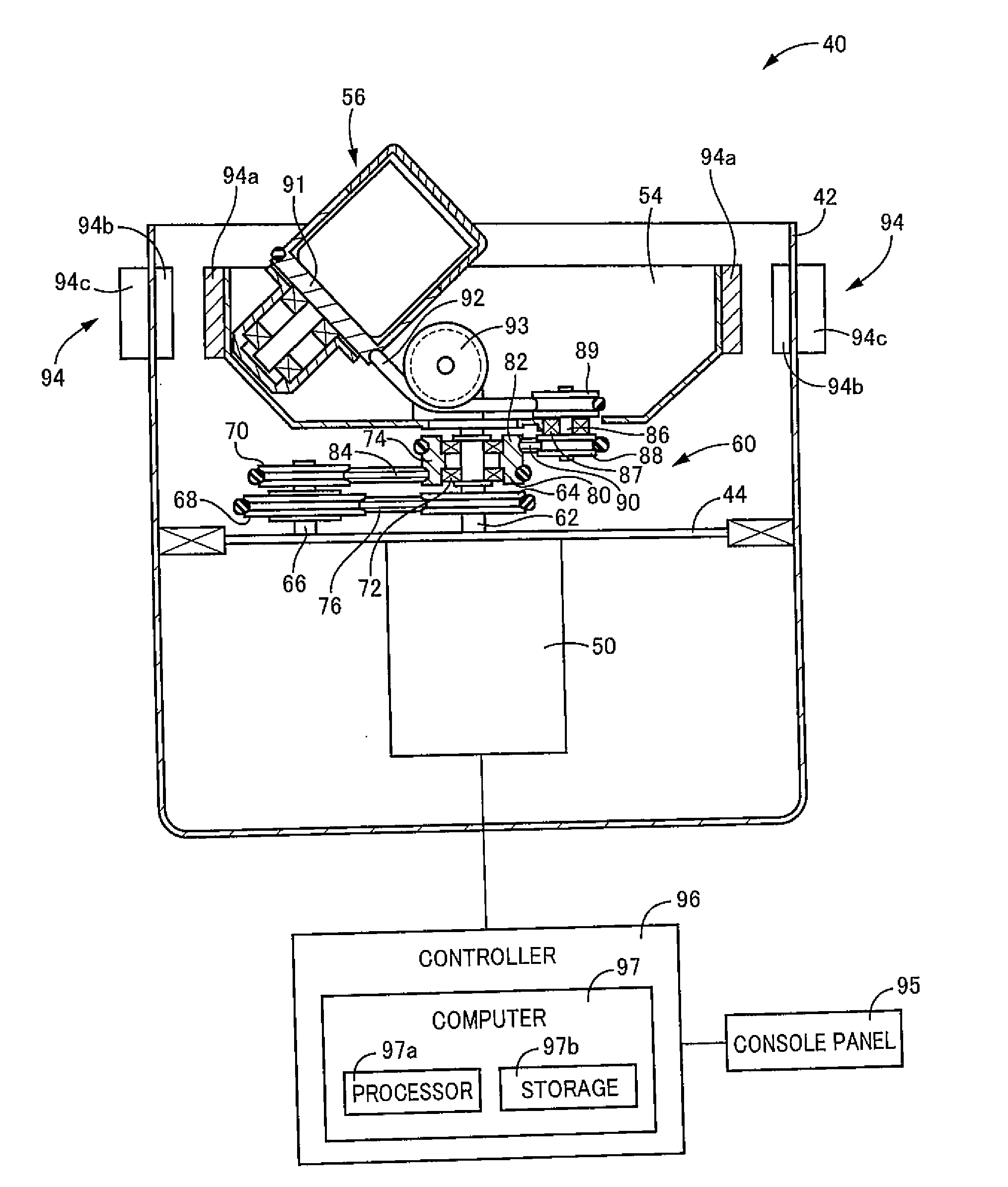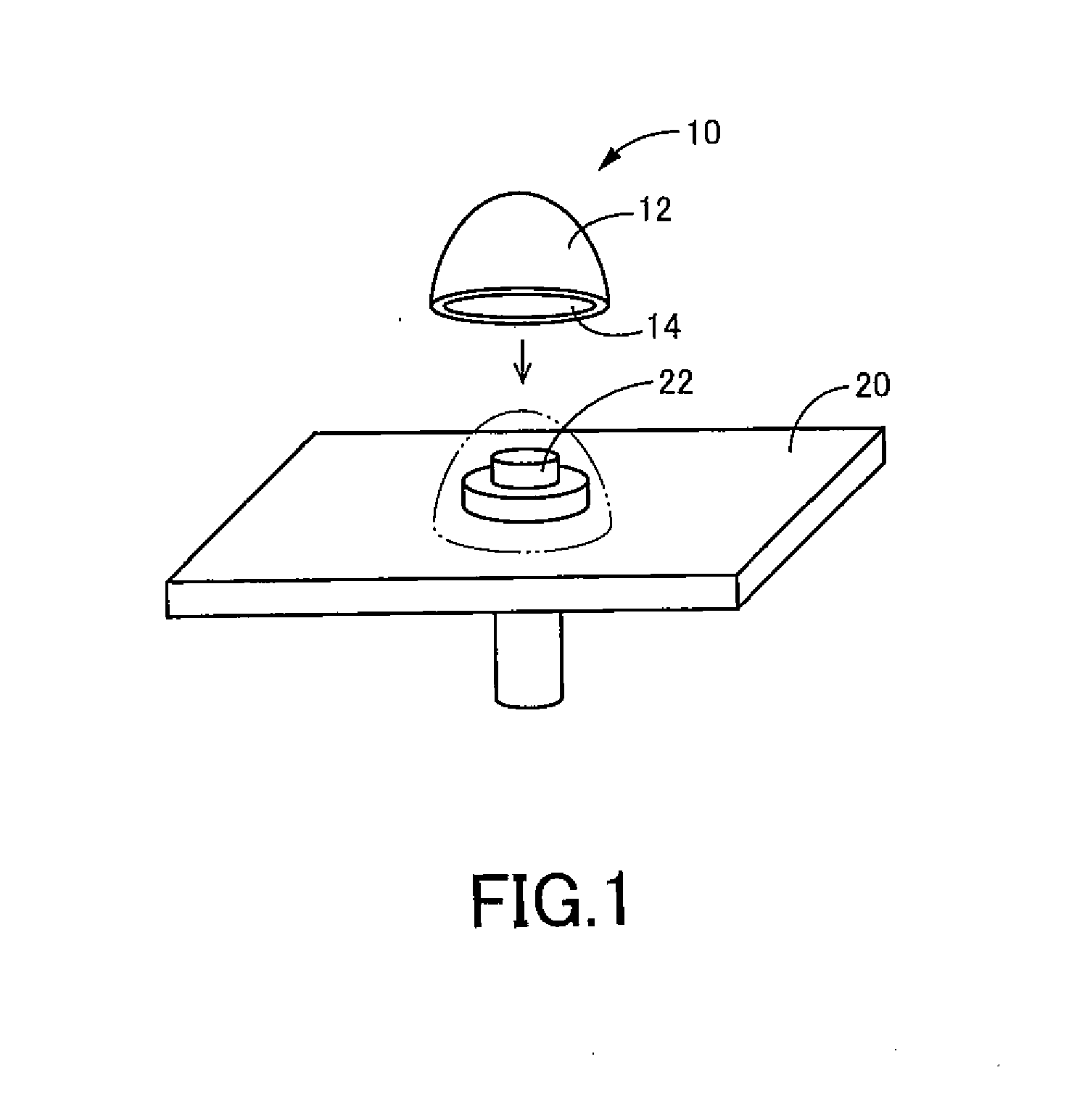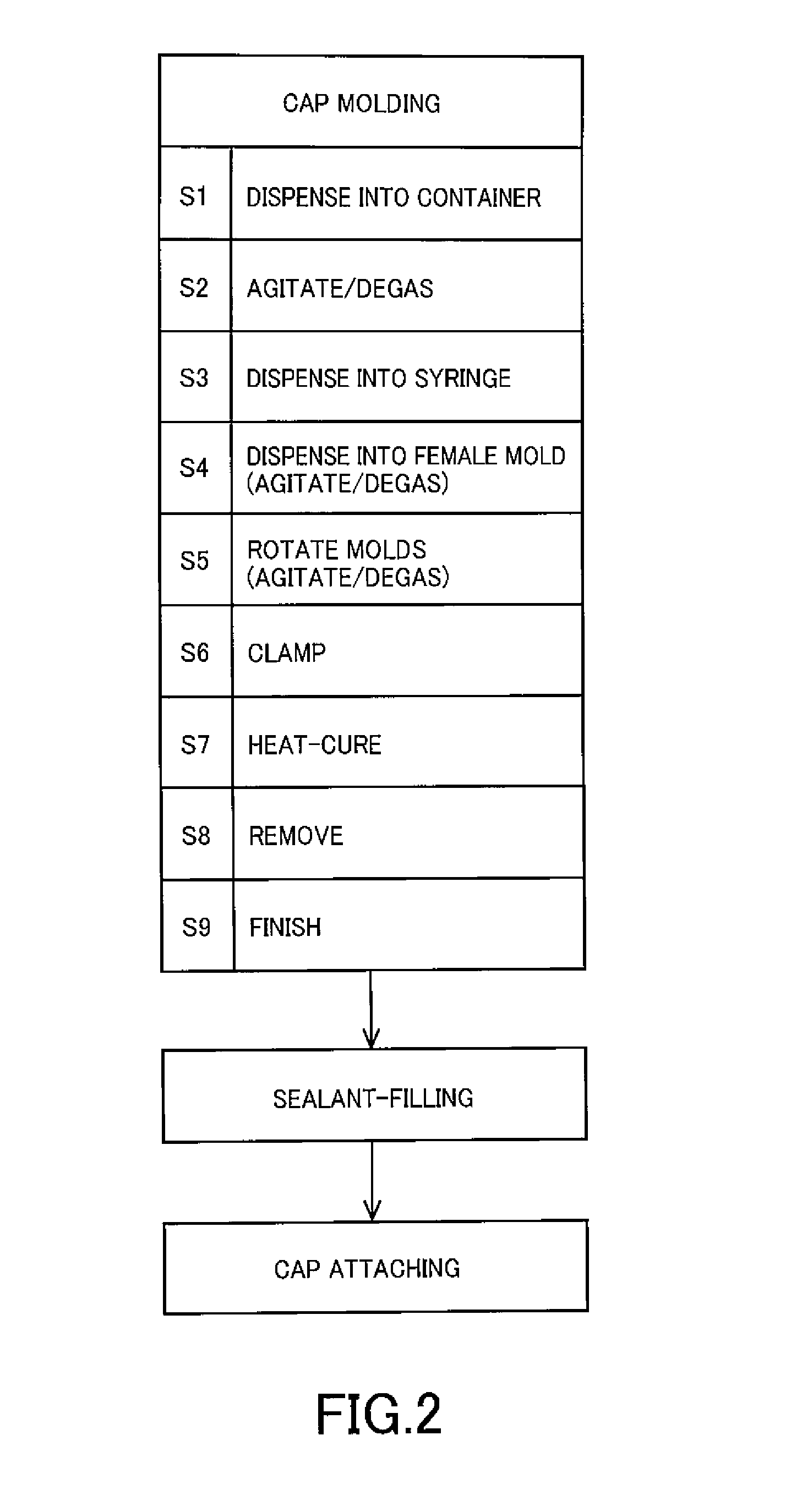Molding method and mold therefor
a synthetic resin and mold technology, applied in the field of synthetic resin product molds and methods, can solve the problems of minute air bubbles trapped in the liquid mixture, surface imperfections of the final molded product, and unsatisfactory possibility
- Summary
- Abstract
- Description
- Claims
- Application Information
AI Technical Summary
Benefits of technology
Problems solved by technology
Method used
Image
Examples
first embodiment
[0114]FIG. 1 illustrates in a perspective view a cap 10 as a molded product to be molded using the cap molding method according to the present teachings.
[0115]The cap 10 is made of synthetic resin and includes a shell 12 that forms a generally hemispherical, hollow shape. The shell 12 includes an outer surface and an inner surface, which both form a generally hemispherical shape, thereby defining a recess (hollow portion) 14, which forms a generally hemispherical shape, within the shell 12.
[0116]The cap 10 will be attached to a fastener, with which a fastened member is fastened, for the purpose of enclosing or covering an outside surface of at least a portion of the fastener, to thereby protect at least a portion of the fastener that would otherwise be exposed.
[0117]In the example illustrated in FIG. 1, the fastened member is a panel member 20 made of synthetic resin, and the fastener is a bolt (alternatively, a screw, a nut or a rivet) 22, with which the panel member 20 is fastened...
third embodiment
[0267]In the third embodiment, as described above, the mold unit 140 is configured to include the guide pins 160 (each is an example of the “first member” set forth in the above mode (5)), which integrally move with the male mold 144, and the elongated guide holes 162 (each is an example of the “second member” set forth in the same mode), which integrally move with the female mold 142. The guide pins 160 move along the elongated guide holes 162, each having a predetermined path, due to the cooperative action of the inertial force, which that acts on the male mold 144 in the rotational direction of the male mold 144 because of its rotation and which varies over time at least in the direction of the force, and the axial centrifugal force, which acts on the male mold 144 because of its orbiting and which varies over time in the magnitude of the force. As a result, the operational state of the male mold 144 is switched between a state, in which the male mold 144 is prevented from closel...
PUM
| Property | Measurement | Unit |
|---|---|---|
| temperature | aaaaa | aaaaa |
| temperature | aaaaa | aaaaa |
| temperature | aaaaa | aaaaa |
Abstract
Description
Claims
Application Information
 Login to View More
Login to View More - R&D
- Intellectual Property
- Life Sciences
- Materials
- Tech Scout
- Unparalleled Data Quality
- Higher Quality Content
- 60% Fewer Hallucinations
Browse by: Latest US Patents, China's latest patents, Technical Efficacy Thesaurus, Application Domain, Technology Topic, Popular Technical Reports.
© 2025 PatSnap. All rights reserved.Legal|Privacy policy|Modern Slavery Act Transparency Statement|Sitemap|About US| Contact US: help@patsnap.com



